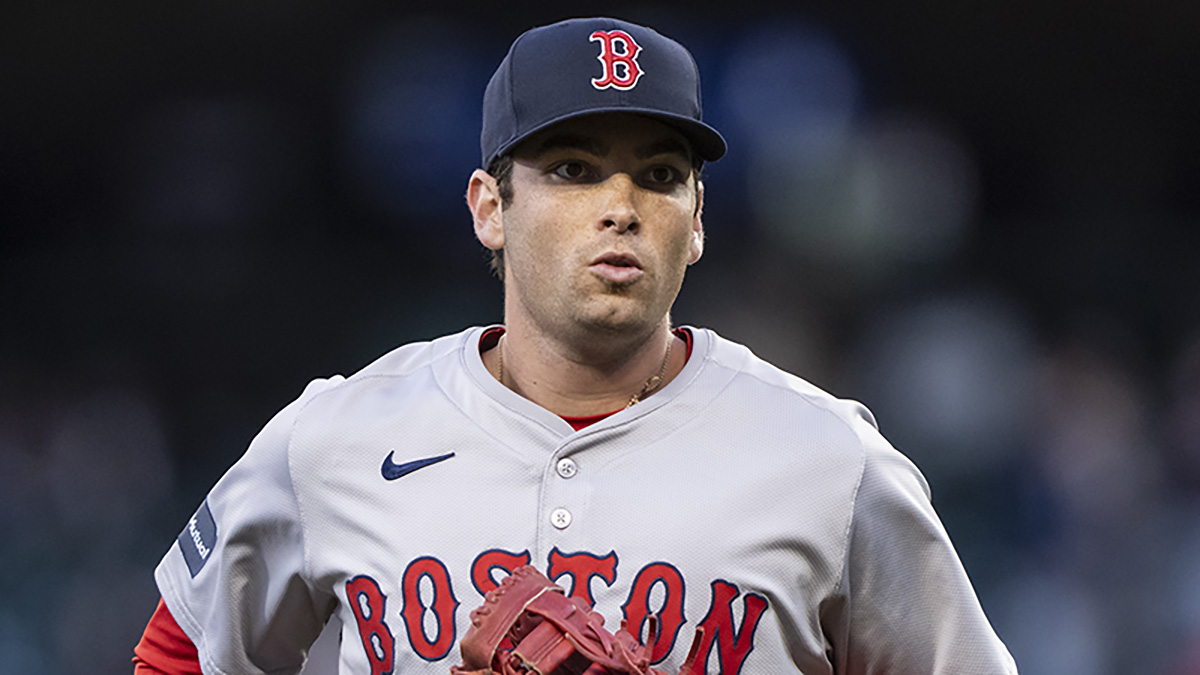Chris Sale's arm didn't feel right in 2018 when he shut it down for half the season before re-emerging to close out the World Series. It didn't feel right in 2019, when manager Ron Roenicke admits his ace felt frustration at fluctuating velocity.
But most importantly, it didn't feel right on Tuesday, when Sale tried to play catch on flat ground with a little extra zip. By the end of that aborted throwing session, both the Red Sox and Sale had reached the conclusion they have spent the last seven months trying to avoid: Tommy John surgery.
On Thursday, the team announced it, and eventually, Sale will undergo it, though the limits on elective procedures and the general strain on the health care system amidst the coronavirus pandemic make picking an actual date more challenging than usual.
Click here for complete Tom Brady coverage and download the MyTeams App for the latest news and analysis.
All that matters for now is that Sale is done for 2020, and likely most or all of 2021, too.
"Needless to say, this is a tough, tough thing for Chris and tough for all of us here with the Red Sox," said chief baseball officer Chaim Bloom on a conference call. "Chris is an outstanding pitcher, and although I haven't known him very long, I'll tell you, in the time I've spent with him, you will not find a more straightforward, more accountable person than him in this game. While we are bummed for him, we know he's going to attack his rehab like he has everything else in his career. We have confidence that he's going to do well coming out of this."
It's a massive blow for the 2020 Red Sox, assuming the season is even played. They envisioned Sale anchoring a staff made thin by the offseason departures of David Price and Rick Porcello, but it just never happened for him this spring.
Boston Red Sox
Sale shut it down with a flexor strain following a 15-pitch bullpen session on March 1 and was only cleared to throw a little over a week ago. He threw lightly on Friday and Sunday in the cage at JetBlue Park in Fort Myers before trying to open up the throttle a bit on Tuesday.
"He experienced enough pain that we had to put a stop to it," Bloom said. "He huddled with us, from folks that were on-site and on the phone, where we put our heads together and made this determination. We knew obviously when he had the setback at the beginning of the month that this was a possibility. When we let the flexor calm down and ramped him up again, he didn't respond as we had hoped and that's where we are today."
So how did this happen just weeks after Sale was cleared to throw following an MRI and second and third opinions from Drs. James Andrews and Neal ElAttrache, two of the most respected orthopedists in the field?
"Imaging is not a perfect solution to every arm problem," Bloom said. "The various structures there, obviously the ligament and flexor are very close to each other. An image is only going to show so much, and you also have to go off the symptoms that you experience, and given the history of the symptoms that he'd experienced, even though there was a consensus among the doctors at the beginning of the month that this wasn't something that warranted surgery, even that he had had this history, it was also agreed upon that if we gave the flexor a chance to calm down and then ramped back up again, experienced pain, surgery would be the next option."
This opens the Red Sox up to a massive second guess: if Sale didn't feel right in 2018 or 2019, and if the symptoms suggested he could end up on an operating table, why wasn't surgery scheduled much earlier in the offseason?
"I thought coming in that the decision made last summer was reasonable," said Bloom, who was hired in November. "Obviously it's not perfect, we don't have a crystal ball with these things. The surgery, even though the success rate is really high, it's not something that should be taken lightly. It's not only a significant downtime, but with any surgery, it's a risk. It's not something you should jump into unless you really feel there isn't a better option."
So when might the surgery take place? Bloom said the Red Sox are mindful of not putting any extra burden on the public health system in the midst of coronavirus, but added that surgery should happen "in the fairly near future."
From there, Bloom described the industry-standard recovery time as 12 months, minimum, with 14 or 15 months the typical midpoint. Fifteen months puts us in July of 2021, at which point Sale will be in the second year of his five-year, $145 million extension.
That said, he couldn't keep pitching like this, not after going 6-11 with a 4.40 ERA last year.
"He was obviously frustrated all last season," Roenicke said. "He didn't feel like he pitched like he could from the get-go. But even the year before, I don't know if it was halfway or whatever it was, he didn't feel like he was right either.
"I know his velocity really fluctuated. It was frustrating for him. He would come out one day and it was 90 mph. The next day maybe it was 95 mph or above. For him to try to pitch the way he knows he can, I think all of us feel the surgery gives us the best opportunity for him to be that guy again, which is probably one of the top five pitchers in the game."


